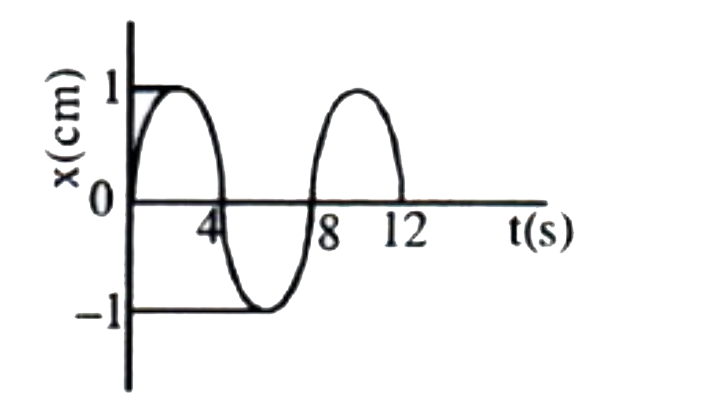A particle of unit mass undergoes one-dimensional motion such that its velocity varies according to
v(x)=βx−2n
where β and n are constant and x is the position of the particle. The acceleration of the particle as a function of x is given by.
−2nβ2x−2n−1
−2nβ2x−4n−1
−2β2x−2n+1
−2nβ2x−4n+1
The correct Answer is:B
To find the acceleration of a particle whose velocity varies according to the equation v(x)=βx−2n, we can follow these steps:
Step 1: Understand the relationship between acceleration, velocity, and position.
Acceleration a is defined as the rate of change of velocity with respect to time, which can be expressed mathematically as:
a=dvdt
However, since the velocity v is a function of position x, we can use the chain rule to express acceleration in terms of x:
a=dvdt=dvdx⋅dxdt
Here, dxdt=v, so we can rewrite the equation as:
a=v⋅dvdx
Step 2: Differentiate the velocity function with respect to position.
Given the velocity function:
v(x)=βx−2n
we need to find dvdx. We differentiate v with respect to x:
dvdx=ddx(βx−2n)=β⋅(−2n)x−2n−1
Thus,
dvdx=−2nβx−2n−1
Step 3: Substitute v and dvdx back into the acceleration equation.
Now, substituting v and dvdx into the acceleration formula:
a=v⋅dvdx=(βx−2n)⋅(−2nβx−2n−1)
This simplifies to:
a=−2nβ2x−2nx−2n−1=−2nβ2x−4n−1
Final Result:
Thus, the acceleration of the particle as a function of x is:
a(x)=−2nβ2x−4n−1
---
Acceleration a is defined as the rate of change of velocity with respect to time, which can be expressed mathematically as:
a=dvdt
However, since the velocity v is a function of position x, we can use the chain rule to express acceleration in terms of x:
a=dvdt=dvdx⋅dxdt
Here, dxdt=v, so we can rewrite the equation as:
a=v⋅dvdx
Given the velocity function:
v(x)=βx−2n
we need to find dvdx. We differentiate v with respect to x:
dvdx=ddx(βx−2n)=β⋅(−2n)x−2n−1
Thus,
dvdx=−2nβx−2n−1
Now, substituting v and dvdx into the acceleration formula:
a=v⋅dvdx=(βx−2n)⋅(−2nβx−2n−1)
This simplifies to:
a=−2nβ2x−2nx−2n−1=−2nβ2x−4n−1
Thus, the acceleration of the particle as a function of x is:
a(x)=−2nβ2x−4n−1
Topper's Solved these Questions
- BOOK - DC PANDEY ENGLISHCHAPTER - MOTION IN A PLANEEXERCISE - (B) Meical entrance special format questions (Mathch the columns)6videos
MOTION IN A PLANE
- BOOK - DC PANDEY ENGLISHCHAPTER - MOTIONEXERCISE - Medical entrances gallery19videos
MOTION
- BOOK - DC PANDEY ENGLISHCHAPTER - PROJECTILE MOTIONEXERCISE - Level - 2 Subjective10videos
PROJECTILE MOTION
Similar Questions
A particle of unit mass is moving along x-axis. The velocity of particle varies with position x as v(x). =αx−β (where α and β are positive constants and x>0 ). The acceleration of the particle as a function of x is given as
View SolutionThe position of a particle is given by
x=2(t−t2)
where t is expressed in seconds and x is in metre.
The acceleration of the particle isView SolutionIf v=x2−5x+4, find the acceleration of the particle when velocity of the particle is zero.
View SolutionA particle of mass m in a unidirectional potential field have potential energy U(x)=α+2βx2, where α and β are positive constants. Find its time period of oscillations.
View SolutionA particle located in a one-dimensional potential field has its potential energy function as U(x)ax4−bx2, where a and b are positive constants. The position of equilibrium x corresponds to
View SolutionA particle moves along a path y=ax2 (where a is constant) in such a way that x-component of its velocity (ux) remains constant. The acceleration of the particle is
View SolutionThe x-t graph of a particle undergoing simple harmonic motion is shown below. The acceleration of the particle at t=23s is
 View Solution
View SolutionA particle moves such that its acceleration is given by a=−β(x−2)
Here, β is a positive constnt and x the x-coordinate with respect to the origin. Time period of oscillation isView SolutionA particle moving in the positive x-direction has initial velocity v0. The particle undergoes retardation kv2 , where vis its instantaneous velocity. The velocity of the particle as a function of time is given by:
View SolutionA particle is executing SHM and its velocity v is related to its position (x) as v2+ax2=b, where a and b are positive constant. The frequency of oscillation of particle is
View Solution
